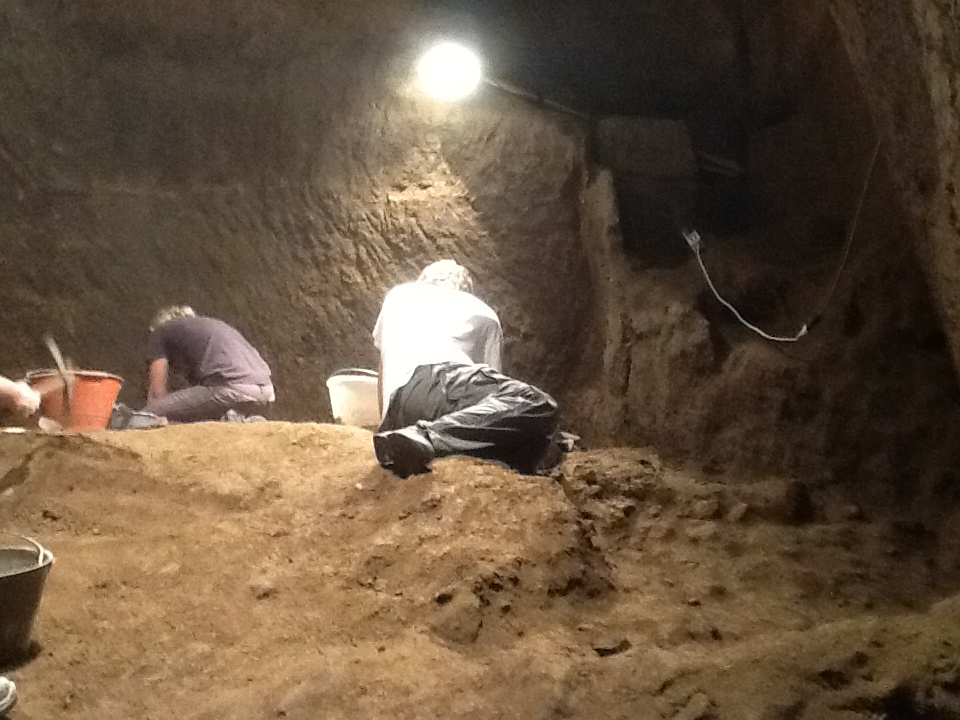The city of Orvieto in the central Italian region of Umbria is perched atop a vertiginous cliff of a soft volcanic ash stone called tufa or tuff. The appeal of its excellent natural defenses has kept it continuously populated from Etruscan times onward, and its vast panoply of underground tunnels and chambers, first dug out of the tufa by the Etruscans, has been used by the residents ever since. A census of the labyrinth underneath the city documented 1200 caves/tunnels/cavities of various shapes and sizes, and there are many more than that which have never been documented.
 In an archaeological first, a group of alumni and students from St. Anselm College in New Hampshire led by classics professor David George and Claudio Bizzarri of the Parco Archeologico Ambientale dell’Orvietano has found that at least two of those caves were carved by the Etruscans in the shape of a pyramid. Etruscans did a lot of digging and central Italy is flush with their underground tomb cities, but none of those structures so far as we know start with a narrow peak that gets progressively wider as you go down to the square base.
In an archaeological first, a group of alumni and students from St. Anselm College in New Hampshire led by classics professor David George and Claudio Bizzarri of the Parco Archeologico Ambientale dell’Orvietano has found that at least two of those caves were carved by the Etruscans in the shape of a pyramid. Etruscans did a lot of digging and central Italy is flush with their underground tomb cities, but none of those structures so far as we know start with a narrow peak that gets progressively wider as you go down to the square base.
http://www.thehistoryblog.com/archives/19866

